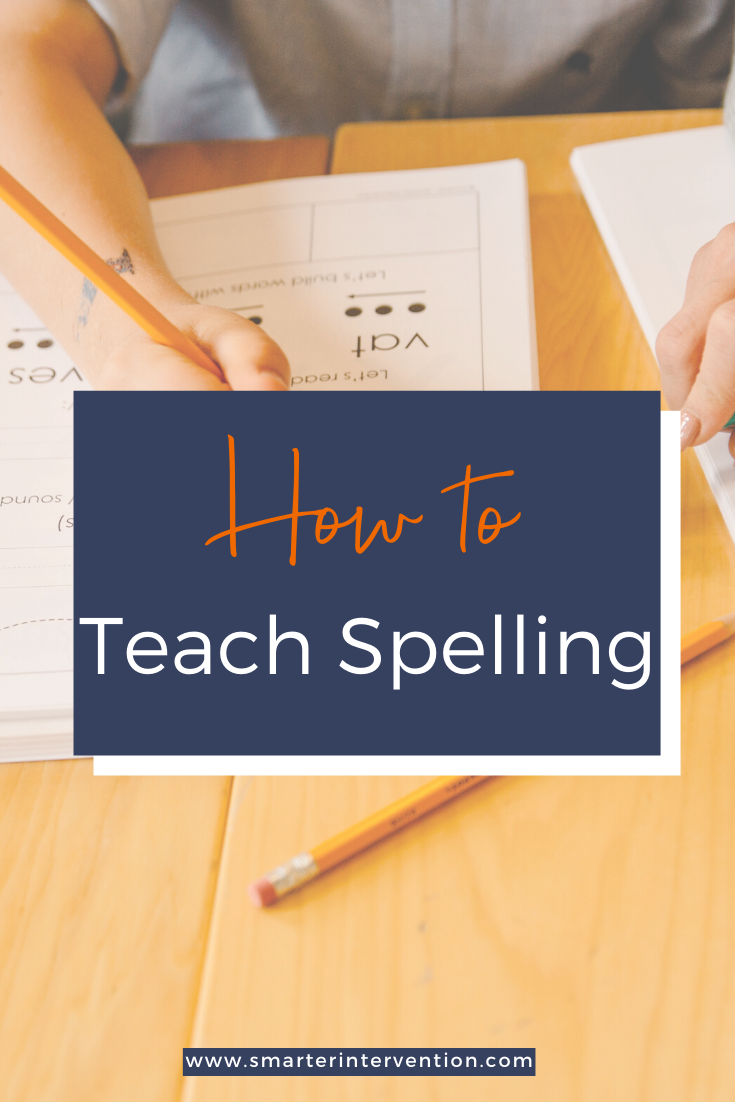How to Teach Spelling
Alright friends, many of you have been asking us this question and we’re excited to share exactly how we teach spelling to our struggling readers and writers!
Here’s the truth -
Spelling is tricky!
And it’s usually one of the last abilities to fully progress for our struggling students. We tell students and parents that we expect growth to evolve in phases.
We typically start at the sound level (making sure that students can associate sounds to letters), then we move up to the syllable level, then to the word level, phrase level, sentence level, and then finally the passage level.
Typically, students will begin to master each of these levels in a building progression (not always because often students are able to spell from visual memory).
One of the biggest mistakes we see well-meaning educators making is that they are only teaching one of these levels of progression at a time.
When teaching spelling we must make sure that we are:
1 - Teaching students the sound-symbol relationship
For example, what does -ck say?
2 - Teaching students which type of syllables we would expect to see this pattern
For example, we use -ck at the end of a single-syllable closed syllable word, like in “truck.”
3 - Asking students to practice spelling these words
This looks like a traditional spelling list you give students to practice each week.
4 - Asking students to begin generalizing and applying these words in phrases and sentences
I cannot even tell you how often students will memorize a word list and then not be able to spell those words correctly in connected text because we forget to have students apply these spelling words.
5 - Asking students to begin generalizing at the paragraph level and beyond
…because again, spelling skills develop in a hierarchy so just teaching word lists without application isn’t getting us to our end goal.
We must also consider the Key foundational skills students NEED to spell effectively!
Specifically -
Phonological Awareness Skills
Students must absolutely be able to:
Break words into syllables
and
Break syllables into sounds (phonemes)
Often, what we see happening is that phonological awareness skills and phonics skills are taught, but they are both taught in isolation without drawing a clear connection between the two.
When we have students practice spelling, we always have them:
1 - Identify how many syllables are in a word by drawing or creating “scoops”.
2 - Identify how many sounds are in each syllable (more advanced students can also practice identifying whether they recognize a prefix or suffix pattern as these patterns often have unique spelling).
3 - Map letters onto individual sounds
As students progress onto patterns in which we have multiple sound options (such as vowel teams), we practice working with students to identify all possible sound options with things like vowel maps.
We always make sure that we are teaching the letter patterns in a SYSTEMATIC and building progression. If you’re interested in finding activities that target writing and the 5 core components of literacy, then you should check out the 5CCL Activity Library. This library has hundreds of resources aligned with the science of reading and will help you to target specific skills during instruction. Click below to learn more.







